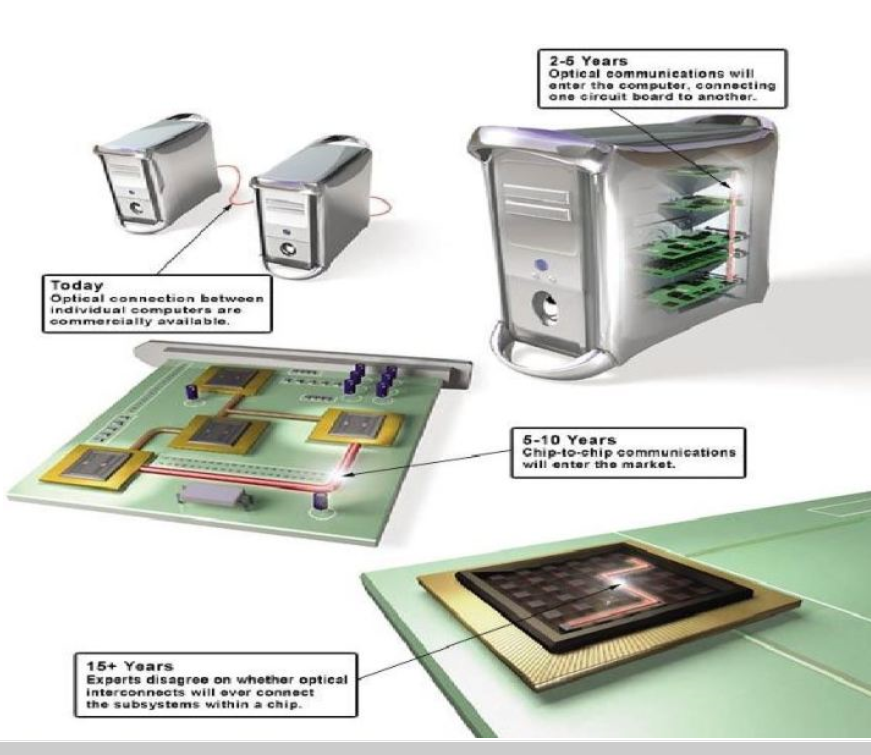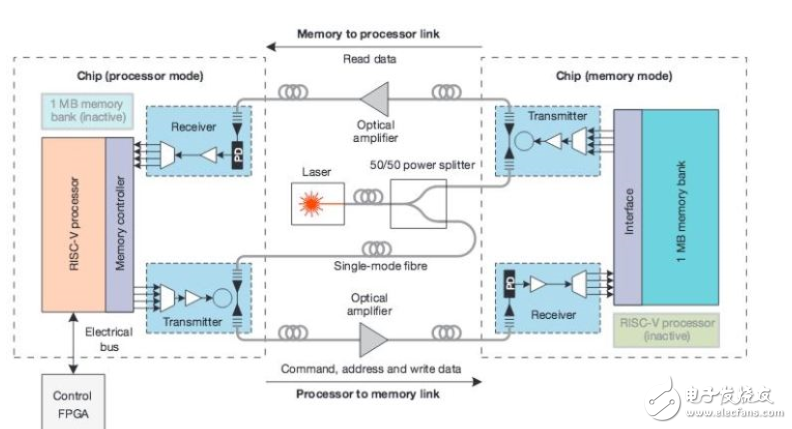The main reason why Silicon Photonics chips attract companies and researchers is low cost and low power consumption, where Si is a good material for light guiding. As the size of CMOS transistors is gradually reduced, optical devices cannot continue to shrink, which has become a research focus of researchers.
In fact, since the 1980s and 1990s, the pioneers who talked about the "Moore's Law" change began to explore the successor of semiconductor chips, in an attempt to replace the silicon chip when it reached the physical limit. The author still remembers that when I was at school, the teacher told us that the CMOS process will reach the physical limit when it develops to a dozen or so nanometers. As a result, 7nm chips are now produced, and the mature technology that replaces the CMOS process has not been applied on a large scale.
Here, we introduce a legendary technique in "More than Moore." Silicon Photonics.
As early as 1969, Bell Labs' SEMiller first proposed the concept of integrated optics. With the development of microelectronic integrated circuits, in 1972, S. Somekh and A. Yarive proposed the idea of integrating optical devices and electrical devices on the same semiconductor substrate. In the 1990s, as silicon-based integrated circuits became smaller in size, their feature sizes have entered the optical communication wavelength range. In addition, the difference in refractive index between the Si and SiO2 materials is large (Si is about 3.45, SiO2 is about 1.44), and total reflection is easy to occur, which is also advantageous for reducing the size of the optical integrated device and increasing the density of the optical chip. However, on the other hand, today, the size of CMOS transistors has been reduced to about 10 nm, and the size of integrated optics cannot continue to shrink due to optical diffraction effects, which on the one hand limits the development of silicon optical chips. Therefore, the current Photonic Integrated Circuits (PIC) refers to the integration of optical connection and photoelectric conversion devices on-chip, and then converted into electrical signals for processing with CMOS integrated circuits. Instead of using optics to completely replace the transistor, as originally proposed.

As shown in the figure above, we are now only developing to fiber-to-the-home, and many data centers will use fiber-level board-level interconnections. But at the bottom of the chip-level communication, major companies and research institutes now have demo chips, 100G modules are basically mature, but there is still a long way to go from the market-wide full application. (PS: The above article was published in 2002, now 15 years have passed, and the author’s prediction has not been completed halfway. I don’t know if it’s fortunate or sad...)
In fact, to say so much, the main reason that Silicon Photonics can make many companies and researchers rush to this is low cost, low power consumption, and Si is a good material for light guiding. Due to the development of the SOI process, the loss of the optical waveguide of Si on a general SOI can be controlled at 2, 3 dB/cm. However, there are still some flaws that limit its widespread use:
How to photoelectrically interconnect: the light source Laser and Photodetector. The Si material itself is an indirect band gap, so now all sources must be made with other materials, such as III-V or Ge, which means that all optics cannot be fabricated on a standard CMOS SOI process. This also introduces a series of cost issues.
How to control light: refers to controlling the deviation of the wavelength. Because the optics are closely related to process parameters such as size, thickness, and doping. For example, according to the test results, the thickness of the poly silicon of the GraTIng coupler is shifted by 10%, and the wavelength of the coupling is shifted by about 50 nm. For example, the on-chip Photonic Modulator, many still need the Heater to adjust. This also poses a challenge to the complexity and cost of the system.
How to integrate: As CMOS transistors shrink in size, and optics cannot continue to shrink due to wavelength and diffraction limitations, this is also an interesting point. In addition, the package between the optical chip and the electrical chip is also a direction worth studying.
Here is an example of a SiPh CommunicaTIon chip:

Source: C. Sun, et al. “Single-chip microprocessor of communicates directly using light”, Nature, 2015.
The article publishes a system that can be called a Microprocessor, theoretically transmitting at 550 Gb/s. Interested students can go and look at it (PS: In fact, I don't know why its transmission wavelength is not in the industry's common 1550nm or 1310nm). For this so-called optical communication, in fact, I think it can be easily understood in this way: we divide it into two parts: light and electricity. The processing part of the electrical signal is actually Serdes plus Digital Processing; and the function of the optical part is to first modulate the optical signal with an electrical signal, send it to the Photodetector at the receiving end, and then convert it into an electrical signal. Only there are some special modules for adjustment at each step.
In short, I hope that through this brief introduction, you can have a general understanding of Silicon Photonics. If there are students who are more interested, look forward to a lot of exchanges and common progress.
Inkjet Receptive Coating, Anticorrosion Pigments, Matting Agent, Polyurethane